#chesters roman fort
Text
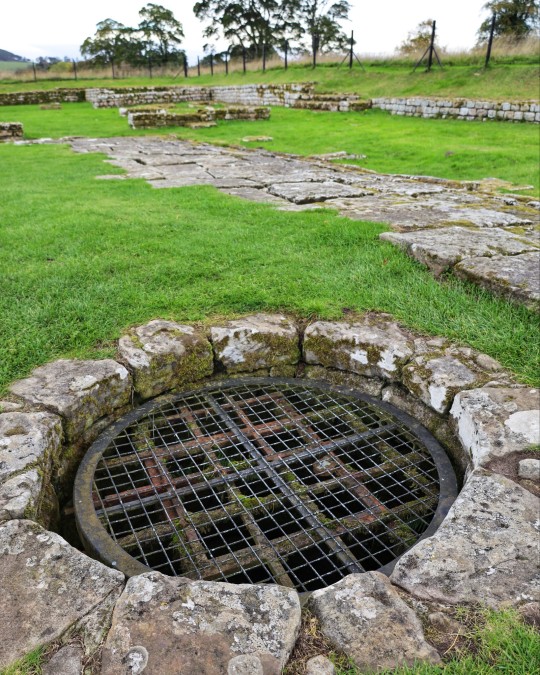
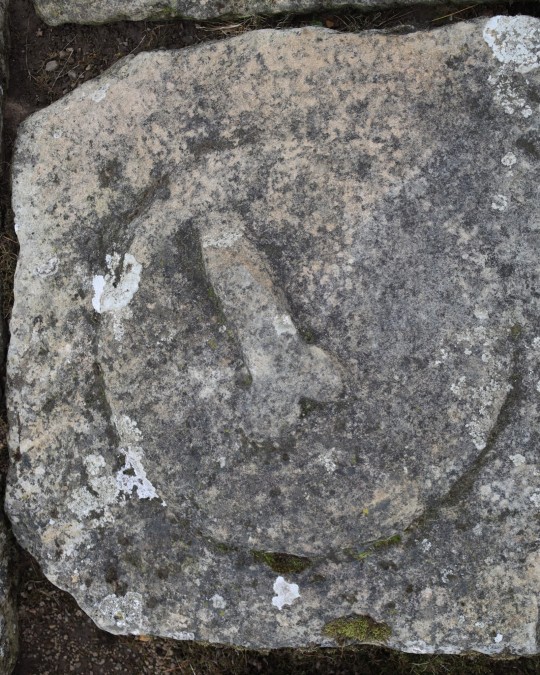

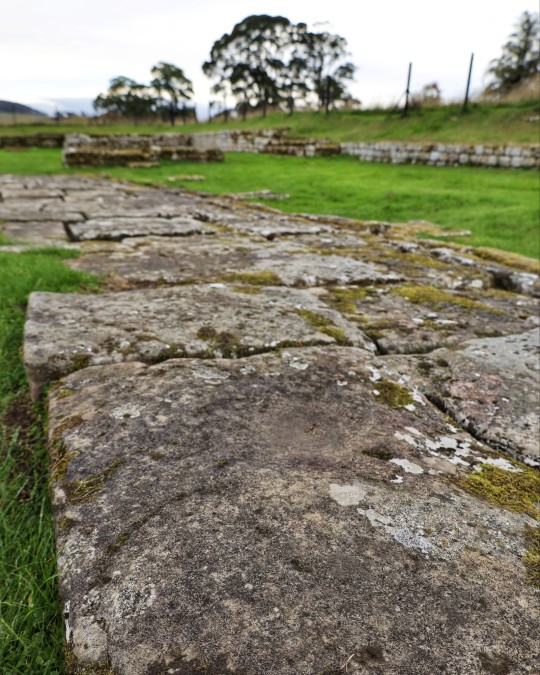
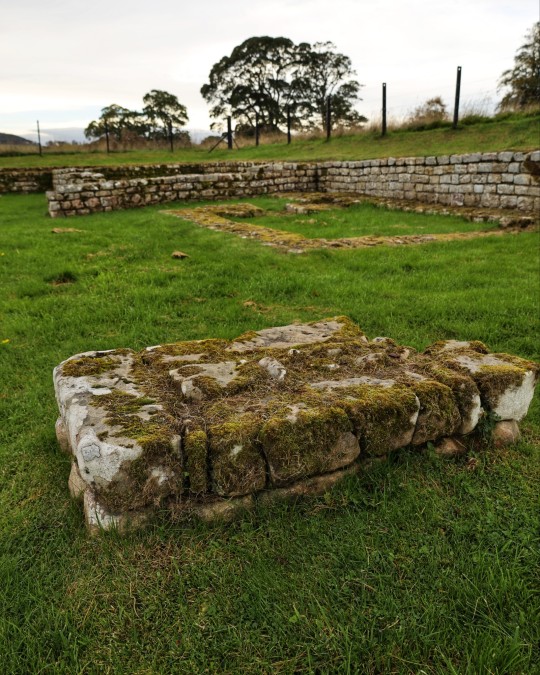
Chesters Roman Fort Headquarters Courtyard and Roman Phallus Relief, Chesters Roman Fort, Hadrian's Wall, Northumberland
#roman#roman army#roman living#roman fort#roman empire#roman building#roman symbols#romans#archaeology#chesters roman fort#landscape#stonework#relic#courtyard#roman society#ancient cultures#ancient craft
766 notes
·
View notes
Note
Yknow how the forest territory is Believably England and then the lake is... Vaguely American? Are there any major changes to the lake from you pushing it back to being Believably England?
This is major nerdish territory but yes actually, in fact I specifically look at Delamere's programs and plan to model the visitor center (in RiverClan territory) off their new 2020 expansion. I think part of why the Lake feels "vaguely American" in canon is like... it's so hard to describe, but it's written like... a summer camp lake. Not a British nature reserve.
Meanwhile, the Forest Territories were based on NEW FOREST, which is a real place in Hampshire that Victoria Holmes used to visit. Because of that, the wetland, moorland, forest, and river are all grounded in reality. Of course it's believable-- Vicky was writing from experience!
Meanwhile, the Lake wasn't even supposed to "become the new map," she thought TNP would be the end of the series. The first sign that it the ecology was gonna get crazy, though, was the Tribe's mountain. girlie... it's southeastern England. what mountain? God tried to hit London with a frying pan and ended flattening the entire area, did Smokepaw fall to his death off a HILL?
But anyway, new BB Lake Territory biome models be upon ye;
ShadowClan's bog is based off Black Lake in Delamere, mixed with a bit of indulgence in specifically letting them destroy a sitka plantation lmao. There's more diversity in the other models though, which is why I don't say the whole thing is JUST Delamere.
The river and lake ecosystem look a lot more like the Dyfrdwy (re: the only protected water zone in the entire UK under the 1991 Water Resources Act) and Llyn Tegid (because it's big, well researched, and clean). The moorland is lowland heather, as seen in Thurstaton Common and Bickerton Hill, though I sometimes have to take research from further south or east because of how devastated those biomes have gotten in this region.
(the aquatic and moorland ecosystems have gotten so. so fucked in the past 200 years.)
(also side note if you want a chuckle, please read this article from the Wildlife Trust on "how to find heather" which has an entire section on what to do if you cannot access moorland, where it suggests other ways you can experience purple. Obsessed with the phrasing of this. Like it's a natural instinct. If you can't find heather go somewhere wet and look at a crocus.)
Other random things about Sanctuary Lake now;
It follows Llyn Tegid's watersports permits system. Power boats are banned and humans are only allowed to swim at the shore.
There's gonna be ruins in WindClan now. Was very surprised to find out that, no, that's not a movie thing, there's just ruins. Cool!
I keep waffling on what sort of ruin it is tho. I'm leaning towards a castle ruin, but Chester uncovered a roman coliseum so THAT would be really cool. It would be neat if they found a lion skull. Maybe some kind of Roman fort.
77 notes
·
View notes
Text
Goodbye, Fawn
My brilliant friend Fawn (@esterbrook) died on Friday.
Fawn and I met when I was about 24 and she was about 43, and at the time, foolishly, I thought I was the cool one. I very quickly realised that I was wrong, and that Fawn was who I wanted to be when I grew up.
She was independent, funny, smart, and passionate. If there was anything she didn’t like, she would do something about it—she campaigned for abortion rights and did phone banking for US elections. She was sharp and kind and pragmatic and gave amazing advice.
Fawn loved stories and history—we met on an archaeological training dig in York, and later bonded over fic in the Sherlock fandom—and was forever turning up old letters and pens and other things that she breathed new life into. She found a pen at a flea market and tracked down its original owner; she chronicled a WWII romance from a box of photographs (https://www.tumblr.com/a-certain-party-i-love).
For the past twenty years, Fawn kept a diary that will now be donated to a women’s history library. I hope one day someone devotes as much care to her memory as she did to other people’s.
I find it hard to think of many people who are leaving as big a legacy as Fawn. Her activism, writing (also wrote the first book on surviving at work when you have depression), and (towards the end of her life) participation in a clinical trial have helped so many people directly, and will continue to reverberate.
And she’s still not done: even before she was diagnosed with ALS, she arranged to donate her body to forensic science (and wrote about it here: https://www.nytimes.com/2019/02/28/well/live/my-afterlife-on-the-body-farm.html).
I’m so lucky to have been able to make wonderful memories with Fawn. We went on a road trip in Northumberland and laughed at all the dicks in Chesters Roman fort with her friend Martin, who I would eventually move to Berlin with; she visited us there and baked a derby pie full of bourbon for Friendsgiving. We went to Brittany and got emotional about the Neolithic standing stones at Carnac. We walked all over London and she showed me spots I didn’t even know about despite living there for three years.
In May, I got to visit her in her beloved San Francisco, where she introduced me to tamales, giant redwoods, and her cat Cosmo, successor of Rupert, the fluffiest and most handsome gentleman who accompanied her for most of her last ten years.
We went over and under the Golden Gate bridge, drank many cups of coffee, roamed around the Castro and Haight-Ashbury, waved across the Pacific, browsed bookshops and made sourdough and did laundry and talked until late into the night.
She was diagnosed with ALS less than a year and a half ago, which was the cruellest fucking thing not only because she deserved so much more time on this earth, but because it made talking, eating and living independently—all things she adored—so much more difficult and eventually impossible. She chose to take advantage of California’s aid in dying law and leave on her own terms, because nobody was ever the boss of Fawn, not even death.
Fawn, I miss you already. I always imagined we would one day be old ladies cackling at dirty jokes together, and it’s a crying shame that the world has been robbed of the wicked glint in your eye at least thirty years too early. You changed my life for the better in so many ways, and I still want to be you when I grow up. I love you. Sleep well.
#esterbrook#oh fawn i miss you already#i was so wildly lucky to know her both online and off#she was absolutely brilliant#feels odd not to have written more about our fannish life but i knew her offline first#i’m realising that i may not have read all her fics yet and i now get to do that
30 notes
·
View notes
Text
So I had checked:
Caer is Welsh for fort. In the 9th century History of the Britons, the old Romen fort town of Deva Victrix is Caer Legion.
In Britain at least, Chester, or any place with the suffix -chester, was largely a fort from the Roman period, coming from the Latin castrum, meaning fort.
In modern Welsh, Chester is still called Caer.
In Modern English and Modern Welsh, Chester is literally referred to as 'fort'.
17 notes
·
View notes
Text
Chester (placename element)
The English place-name Chester, and the suffixes -chester, -caster and -cester (old -ceaster), are commonly indications that the place is the site of a Roman castrum, meaning a military camp or fort (cf. Welsh caer), but it can also apply to the site of a pre-historic fort.
source: WIkipedia.

I found the book on the English place-names by Charles Whynne-Hammond. Direct quote about fortified places which ended up as the name of cities/towns with suffix (somewhere altered) -cester.
"The most common elements which refer to defensive sites are those meaning army camp, fort or fortified place. The Romans built many a defensive or military base, most of which were taken over by later peoples. The ‘colonia’ was an army establishment, usually a colony for retired soldiers (hence the present name of Lincoln) and a ‘castra’ was a fortified camp or walled town. The latter was very common indeed and most were re-established under the later Saxons, who called them ‘ceasters’ or ‘caesters’. Their walls were rebuilt, their gates and towers restrengthened, their streets resurfaced. The settlements today which began as Roman ‘castras’ are legion. Normally they can be recognised by their suffixes, which derive from the Saxon version of that word. Thus, we have all those places ending in ‘-chester’, ‘-cester’ ‘-caster’ and ‘-xeter’: Winchester, Worcester, Manchester, Doncaster, Exeter and so on. Some of these have prefixes from older Celtic words (sometimes tribal names or physical features), others have prefixes purely Saxon. Rarely, if ever, are the prefixes from a Roman or Latin root."
More examples: Acaster Malbis, Acaster Selby, Alcester, Alchester, Ancaster, Bicester, Binchester, Brancaster, Caister-on-Sea, Caistor, Caistor St Edmund, Casterton (Cumbria), Casterton (Great, Rutland), Casterton (Little, Rutland), Castor (Cambridgeshire), Chester, Cheshire (Chester-shire), Chester (Little, Derby), Chesterfield, Chesterford (Great), Chesterford (Little), Chester-Ie-Street, Chesterton, Chesterwood, Chichester, Cirencester, Colchester, Dorchester, Dorchester-on-Thames (Oxfordshire), Ebchester, Frocester, Gloucester, Godmanchester, Grantchester, Hincaster, Ilchester, Irchester, Kenchester, Lancaster, Lancashire (Lune-caster-shire), Lanchester, Leicester, Mancetter, Muncaster, Portchester, Ribchester, Rocester, Rochester (Kent), Rochester (Northumberland), Silchester, Tadcaster, Towcester, Uttoxeter, Woodchester, Worcester, Wroxeter.
Since there are a lot of "-shire", and it's popular place name all over GB, I'll make next etymology-of-places post about this suffix.
2 notes
·
View notes
Text
There’s academic writing that’s confusing because you lack the foundational knowledge to understand it--and that’s on you--and then there’s this:
“The findings of Sarmatian beads in Chesters on Hadrian's Wall,8 undoubtedly denote the presence of some Sarmatian troops in that fort, where presumably they were aggregated to the regular garrison; they had already been noticed at the time by the scholar T. Sulimirski. Precisely for this annotation, particular attention has been paid to female Sarmatian ornaments in English museums. One could mistakenly object to the real temporal primacy of this form of ornament.”
I’ll cheerfully admit I don’t know fuck about this, but Jeebus. “The real temporal primacy”? I actually have no idea what that’s meant to mean.
The TL;DR is “Y’all are wrong and also blind; I looked at the finds and there were totally Sarmatians (central Asian steppe tribe associated with the Romans) in England and they left obvious artifacts.” But like...sentences. god.
21 notes
·
View notes
Text
know what's a fun fact about manchester. the latin name of the roman fort was "mamucium", meaning "breast-shaped hill". "chester" came from "castrum", meaning fort, which is why many cities here have that affix. the name has since evolved down the years to be unrecognisable to most modern people, but still resemble "man chest". tits endure.
#transchester#a lot of hills around the world are identified this way it's probably just a natural pattern for humans to make#but you think a couple romans were surveying the landscape from a high point deciding what to name it like “LMAO julius”.
14 notes
·
View notes
Text
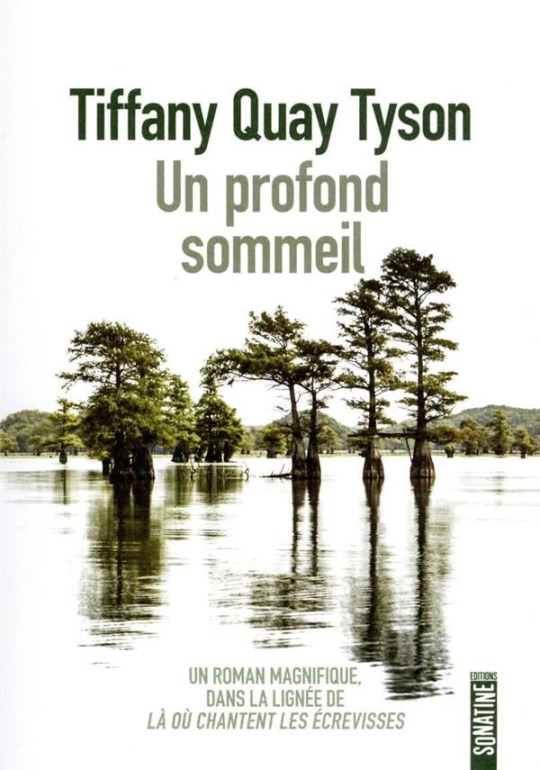

Joie ! Bonheur ! Félicité !
Une nouvelle écrivaine qui m’a séduite de A à Z avec son roman mené tambour battant !
Vous pouvez lire ci-dessus la 4e de couverture qui vous renseignera sur le sujet du livre. Mais ce qui a compté pour moi, au-delà de la quête (parfois qui frôle l’enquête) qui se résoudra avec brio d’ailleurs, c’est le souffle romanesque qui emporte tout dès le début. On éprouve vraiment les lieux où se déroulent l’histoire (de la chaleur moite du Mississippi à la mangrove inquiétante des Everglades), et on se passionne pour les personnages. En premier lieu, Bert et son frère, tout jeunes quand l’histoire démarre. Leur lien est fort, assez bouleversant ; ils font face à leur culpabilité (ils s’estiment responsables de la disparition de leur sœur) et au naufrage progressif de leur mère (dévorée de chagrin) avec gravité. Ils mûrissent en accéléré, forcés par les circonstances. Ils se retrouvent livrés à eux-mêmes, et ils s’en tirent bien, grâce à leur solidarité et à leur courage. Pas de misérabilisme dans le récit. Les dialogues sont souvent drôles et bien sentis car ils traduisent un mélange de bon sens pétri de superstitions et que les personnages sont hauts en couleurs. Tante Clem et ses pouvoirs ses herbes, Earl l’énigme, Chester le fou blessé, et une foule de gens bien campés, qui proposent un éventail assez truculent de l’humanité de ce sud des États-Unis, celui des laissés pour compte, des gens qui se bricolent une vie et une histoire.
Bert va parcourir un long chemin, tortueux et dangereux, pour connaître la vérité sur sa famille. Mais elle est têtue, tenace et sa quête de réponses est obsessionnelle, identitaire mais quasi métaphysique aussi.
Qui sommes-nous ? Le produit d’un lieu ? Le fruit de deux êtres ? D’une lignée ? Une famille peut-elle être maudite ? Peut-on décider de sa vie, de sa famille ? Les malheurs de nos ancêtres se transmettent-ils ?
Parallèlement à la trajectoire de Bert, on découvre le passé des lieux, et le parcours tragique d’une famille, violentée par le racisme, qui fait partie intégrante du Sud des États-Unis. On comprend alors la psychologie malade d’un père, malmené par la vie, construit de blessures et de déchirements qui font de lui un paradoxe : escroc, père aimant, illuminé, superstitieux.
A la fin de sa quête, Bert en sortira bouleversée mais éclairée, plus que jamais désireuse de dire la vérité et de rompre avec la tradition familiale des mensonges et des secrets. Au fond, le roman raconte la nécessité de la mémoire, de la transmission, des histoires qu’on se fait passer pour ne rien oublier.
Et le lecteur, lui, aura à nouveau envie de lire une histoire aussi puissante, écrite par Tiffany Quay Tyson.
#littérature#livres#litterature#livre#roman#tiffany quay tyson#un sommeil profond#sud des États-Unis#mississippi#everglades
4 notes
·
View notes
Text
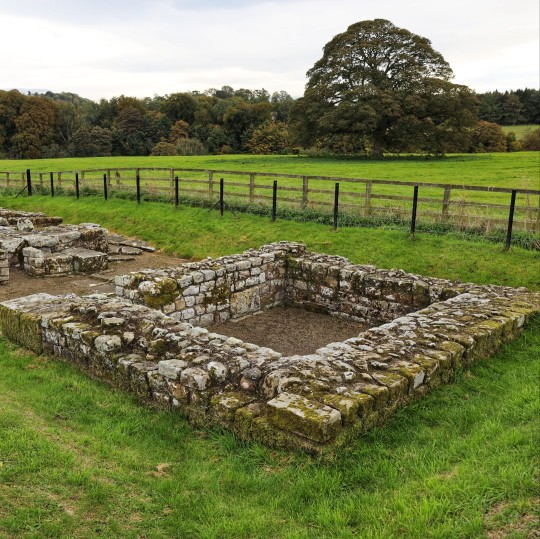
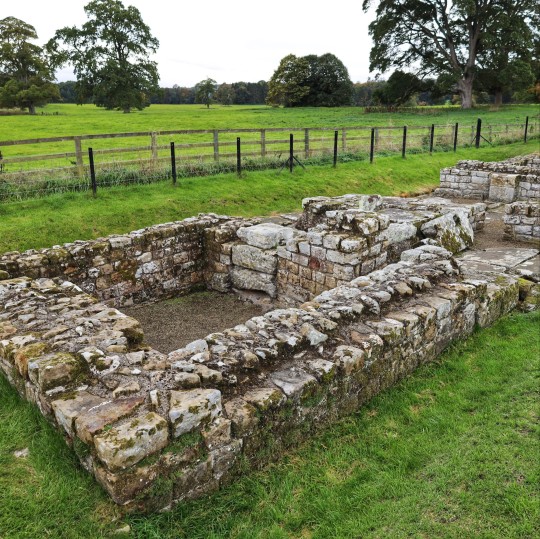
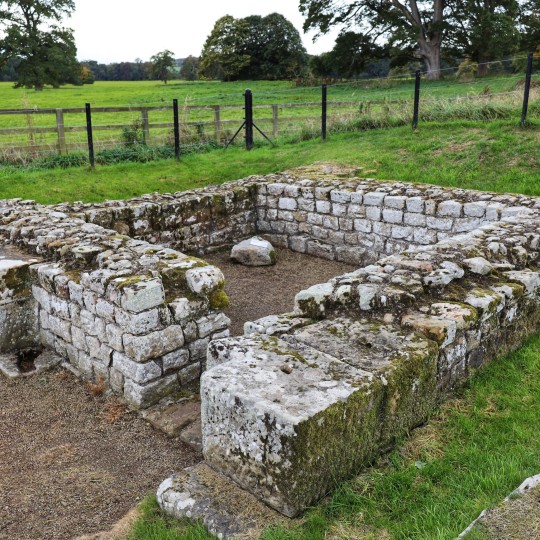

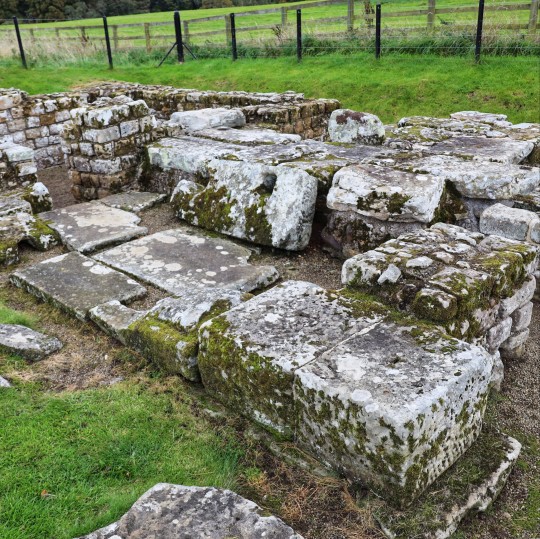

Chesters Roman Fort South Gate, Chesters Roman Fort, Hadrian's Wall, Northumberland
#roman fort#archaeology#Chesters Roman Fort South Gate#Chesters Roman Fort#Hadrian's Wall#Northumberland#romans#roman army#roman building#roman empire#gate house#ancient sites#ancient living#wild places
85 notes
·
View notes
Note
What would your drag name be? What would your pro wrestling name be?
Drag Name - Deva With A Dee. Cause I'm from Chester, which was a roman fort called Deva and the river Dee flows through the town.
Pro Wrestling Name - Can I used the Twinkinator cause I can't think of anything else
3 notes
·
View notes
Text
Events 2.9 (before 1950)
474 – Zeno is crowned as co-emperor of the Byzantine Empire.
1003 – Boleslaus III is restored to authority with armed support from Bolesław I the Brave of Poland.
1098 – A First Crusade army led by Bohemond of Taranto wins a major battle against the Seljuq emir Ridwan of Aleppo during the siege of Antioch.
1539 – The first recorded race is held on Chester Racecourse, known as the Roodee.
1555 – Bishop of Gloucester John Hooper is burned at the stake.
1621 – Gregory XV becomes Pope, the last Pope elected by acclamation.
1654 – The Capture of Fort Rocher takes place during the Anglo-Spanish War.
1775 – American Revolutionary War: The British Parliament declares Massachusetts in rebellion.
1778 – Rhode Island becomes the fourth US state to ratify the Articles of Confederation.
1822 – Haiti attacks the newly established Dominican Republic on the other side of the island of Hispaniola.
1825 – After no candidate receives a majority of electoral votes in the US presidential election of 1824, the United States House of Representatives elects John Quincy Adams as sixth President of the United States in a contingent election.
1849 – The new Roman Republic is declared.
1861 – American Civil War: Jefferson Davis is elected the Provisional President of the Confederate States of America by the Provisional Confederate Congress at Montgomery, Alabama
1870 – US president Ulysses S. Grant signs a joint resolution of Congress establishing the U.S. Weather Bureau.
1889 – US president Grover Cleveland signs a bill elevating the United States Department of Agriculture to a Cabinet-level agency.
1893 – Verdi's last opera, Falstaff premieres at La Scala, Milan.
1895 – William G. Morgan creates a game called Mintonette, which soon comes to be referred to as volleyball.
1900 – The Davis Cup competition is established.
1904 – Russo-Japanese War: Battle of Port Arthur concludes.
1907 – The Mud March is the first large procession organised by the National Union of Women's Suffrage Societies (NUWSS).
1913 – A group of meteors is visible across much of the eastern seaboard of the Americas, leading astronomers to conclude the source had been a small, short-lived natural satellite of the Earth.
1920 – Under the terms of the Svalbard Treaty, international diplomacy recognizes Norwegian sovereignty over Arctic archipelago Svalbard, and designates it as demilitarized.
1922 – Brazil becomes a member of the Berne Convention copyright treaty.
1929 – Members of the Việt Nam Quốc Dân Đảng assassinate the labor recruiter Bazin, prompting a crackdown by French colonial authorities.
1932 – Prohibition law is abolished in Finland after a national referendum, where 70% voted for a repeal of the law.
1934 – The Balkan Entente is formed between Greece, Romania, Yugoslavia, and Turkey.
1941 – World War II: Bombing of Genoa: The Cathedral of San Lorenzo in Genoa, Italy, is struck by a bomb which fails to detonate.
1942 – Year-round Daylight saving time (aka War Time) is reinstated in the United States as a wartime measure to help conserve energy resources.
1943 – World War II: Pacific War: Allied authorities declare Guadalcanal secure after Imperial Japan evacuates its remaining forces from the island, ending the Battle of Guadalcanal.
1945 – World War II: Battle of the Atlantic: HMS Venturer sinks U-864 off the coast of Fedje, Norway, in a rare instance of submarine-to-submarine combat.
1945 – World War II: A force of Allied aircraft unsuccessfully attack a German destroyer in Førdefjorden, Norway.
0 notes
Text
06.17-18.2023; stayed for the dolphins
A little trip to Wales? Don't mind if I do~
After a nice night out in Liverpool we put on our hiking boots and set out on a medieval day in magical Wales.
Whenever I think of Wales I think of dragons, castles, and wide fields. Lucky for me, that's exactly what I found. Our first stop took us to Conwy Castle. Now when you think of old run-down castle that could possibly house a dragon, Conwy is exactly what comes to mind. During its time as an active castle, Conwy stood to fortify the next-door Conwy but it never really got used as a place of residence. Despite being a run-down castle its forward bridge still gets some use out of it after being transformed into a suspension bridge in the early 19th century.
A twenty-minute ride away was the town of Llandudno, the home of the writer of the Alice in Wonderland stories. This quaint seaside town feels as if it's straight out of a postcard. Its colorful buildings seafront building and never-ending pier. We took the hike up the Great Orme, and the view was absolutely breathtaking. The whole time I was up there it felt as if I was in Thor Ragnarok, watching as Odin went off to Valhalla. While admiring the view I met a little dragon that would let me take him home, far away from his magical lands.
The following day we would visit another medieval town named Chester. Chester was initially constructed as a fort known as Deva by the Romans in 79 AD. Spread around the town you can still find relics from its Medieval timeline including the Roman Amphitheater, the Chester Cathedral, and a more recent addition to the town, the Eastgate Clock (built for Queen Victoria's Diamond Jubilee). While in the town, my flatmates and I hit for the waters and went around on a peddle boat. It was relaxing to lay back as the ducks swam past us, but it was also exhilarating to race the other boat riders.



0 notes
Text
I just had a memory back to my days in primary school (and I have no idea what brought it on) and it was this outdoor historical centre thing that focused around the Celts, the Celtic people of Britain, and it was a very interactive place: we had costumes, so the clothing, the jewelry and obviously the weapons, along with getting our faces painted in the Celtic styles and also we got to get our hands dirty applying wattle and daub to an ancient roundhouse’s wall.
And then that’s also flowed into Chester, which was the site of the Roman military fort of Deva, and they have their museum there, but they also have these guys dressed as Romans (either actual legionaries or auxiliaries, depending on day it seems) and they’d give the kids little child-sized scutums and gladii and march them around parts of Chester while giving them history lessons and such (there is a photo of the latter on here that’s made the rounds a few times).
And I love that for kids, and I feel that’s something that needs to be done more. Get them actually and actively engaged with the subject.
0 notes
Text
Hadrian's Wall is one of the most iconic sites in Northern England and annually attracts thousands of hikers and history fans along its 84-mile-long (135 km) National Trail. Stretching across the country from Wallsend on the River Tyne in the east to Bowness-on-Solway on the west coast, Hadrian's Wall is regarded as one of the Roman Empire's greatest engineering feats and a fascinating legacy left to Britain by Emperor Hadrian
1. Housesteads Roman Fort & Surroundings
2. Steel Rigg & Sycamore Gap
3. Vindolanda Fort & Museum
4. Chesters Roman Fort
5. Corbridge Roman Town
6. Birdoswald & Willowford
7. Temple of Mithras (Carrawburgh)
8. Great North Museum: Hancock
9. Cawfields
10. Benwell Temple & Vallum Crossing
1 note
·
View note
Text
Hadrian’s Wall - Corbridge, Chesters, Brocolitia, Housesteads
Hadrian’s Wall – Corbridge, Chesters, Brocolitia, Housesteads
An excerpt from the book: Travels through History – North-East England
The permanent conquest of Britain by the Romans began in 43 AD and by about 100 AD there were army units along the stretch of land between the River Tyne and the Solway Firth. Their forts were linked by a road, now known as the Stanegate, between Corbridge and Carlisle. The Emperor Hadrian came to Britain in 122 AD and the…
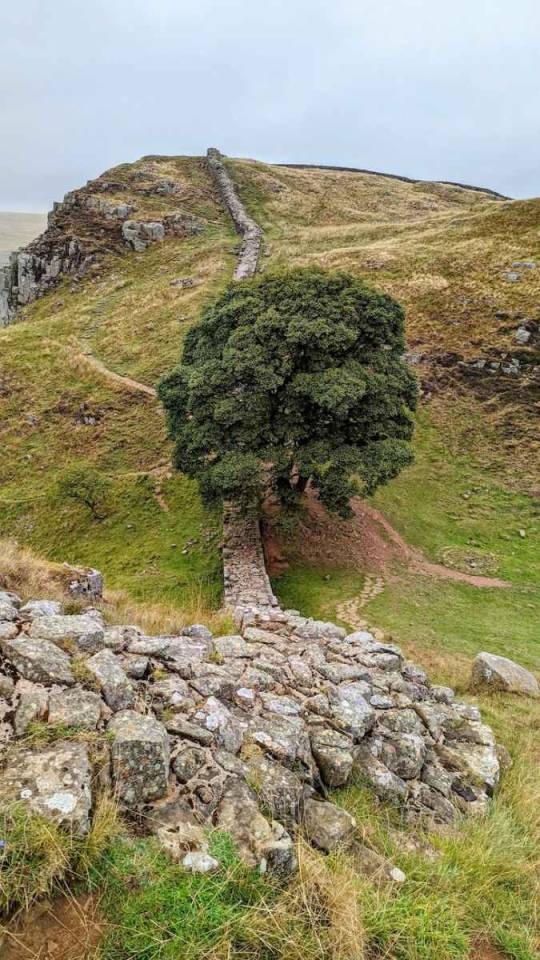
View On WordPress
0 notes
Text
I don’t know what people in other countries are taught about the ancient Romans, but their occupation is a big part of UK history and we learn a lot about them as children. You can’t drive five minutes without stumbling on a suspiciously straight road* or the ruins of an ancient Roman fort. The common place name suffixes -chester, -cester, and -caster all come from the Latin “castrum”, which means fort or military camp. The city of Bath is literally just built on an ancient Roman bathhouse.
Up North is Hadrian’s Wall. Hadrian’s Wall is 73 miles long, almost coast-to-coast at the narrowest point of northern England. Emperor Hadrian had more interest in defending his territories than expanding the empire. There was no natural barrier to defend, so the construction of the wall began in the year 122AD. This provided a hard border between ancient Britannia and the ungovernable Celtic barbarians in Caledonia.** It’s our very own Great Wall. And lots of it is still there today.
Sure, Italy has the Colosseum. It’s pretty nice. But we have some cool stuff too, is what I’m saying.
This is all a bunch of context for me saying that a friend suggested we do one of their favourite walks along the wall today, so off we went. We stopped one hill short of a big fort, which was disappointing to realise afterwards but gives us a nice reason to go back and do it again. I took photos because I Take Photos.
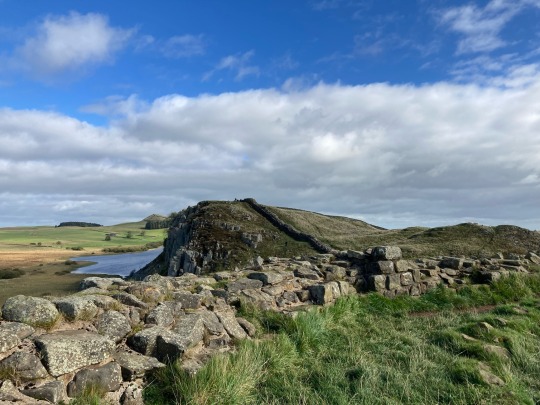
What struck me the most about Hadrians Wall is how simultaneously over and under whelming it is. At the end of the day it’s just an old wall; a few foot thick, made of local rock, not that interesting. But the length, the location, and the history elevate it to something more. It’s punctuated at regular intervals with ancient forts and gate houses. You can feel the reality of being a soldier so impossibly far from home, cursing his luck to be assigned to this cold and windy moor.

It’s also literally elevated. Assaulting this wall from the northern side is a deathwish. Attackers would be facing steep embankments and straight up cliffs. There is absolutely no cover on the moor and defenders would see a marching army from miles away. When the wind is at it’s highest the walk itself up and down the rocky uneven steps is dangerous.

Finally, the wall is the home of one of the most photographed trees in England, at Sycamore Gap. I cannot deny it is a very nice tree, but my only photo has peoples faces in it so here’s a bad substitute.

I’m supposed to be writing application documentation for work. This was more interesting. I hope somebody else finds it mildly interesting too.
* British roads, especially motorways, are built with a deliberate curve. This is to keep the attention of drivers and stop them from zoning out too much.
**There is another, less famous, wall bisecting what is now Scotland, as the Romans eventually pushed further north and took the border with them. This is the Antonine Wall. The whole unconquerable thing remains a point of pride for all of Scotland, and they still use the name Caledonia in poetry and such.
#romans#ancient#ancient romans#ancient history#history#hadrianswall#hadrian’s wall#hadrians wall#sycamore tree#I can’t believe we went all this way and didn’t know we were right next to vercovicium fort#next time we’ll go to housesteads#photos
1 note
·
View note